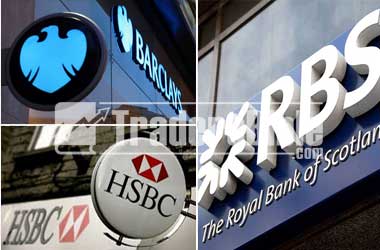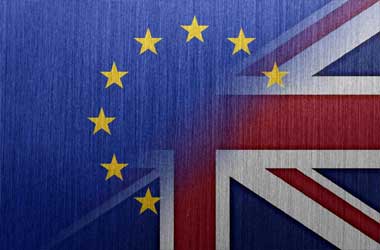 The British Pound gained a more solid footing before of the weekend as a Bank of England member cautioned that an interest rate hike may be necessary earlier than the street presently thinks, although advances might well be restricted due to some poor short-term data disclosures.
The British Pound gained a more solid footing before of the weekend as a Bank of England member cautioned that an interest rate hike may be necessary earlier than the street presently thinks, although advances might well be restricted due to some poor short-term data disclosures.
In accordance with current market forecasts, Gertjan Vlieghe, a member of the Bank of England’s (BoE) Monetary Policy Committee, anticipates a rate hike towards the end of 2022.
Nevertheless, he noted that if the conclusion of the vacation in September results in only a little unemployment rate, the rate hike may have to come earlier.
On the Monetary Policy Committee (MPC), Vlieghe is known as a “dove,” indicating he is far more inclined to evoke a sense of caution when it comes to hiking rates. Markets saw the remarks as an indication that the MPC was considering changing its position.
“With the Fed and ECB staying cautious, the pound might restart its ascent higher against many other major currencies if the BoE continues to signal at reducing stimulus,” writes Reuters financial expert Paul Spirgel. Following the presentation, sterling rose by as much as half a percent versus the Euro and Dollar, but just three-quarters of a percent versus the Yen and Franc.
The street appears to believe that Vlieghe’s attitude may signify a change in thinking amongst some of the MPC’s other dovish members, especially if labor market data continues to progress. On May 27, the ONS reported that roughly 8.0% of the employees remain furloughed, the lowest number so far in 2021.
If this rate continues to decline before September, the Bank of England may become more optimistic about the economy’s outlook. Short-term employment numbers repeatedly pointed to a swift recovery in the UK economy, but those keeping an eye on the Pound are concerned that the information may not be robust enough to trigger further major increases.
The ONS now publishes a weekly analysis of short-term signals from a wide range of sources that seeks to shed light on how well the economy is doing, with statistics revealing that the count of individuals eating out has increased dramatically, while internet job adverts have returned to pre-pandemic levels.
However, total expenditure statistics from the ONS and the Bank of England released this week miffed a handful of experts, with one stating that a bigger out climb is required if the Pound is to attract a far more substantial bid.
“My opinion is that we are witnessing a consumer revival, but not a consumer surge. The media report has gone too far in the direction of the latter” Samuel Tombs, Pantheon Macroeconomics’ Chief UK Economist, agrees. The cumulative CHAPS-based measure of credit and debit card sales was at 96% of its February 2020 equivalent rate in the week ending 20 May 2021, up 31% from the beginning of January 2020.
“Preconceptions were that social expenditure would rebound to pre-pandemic proportions, comparable to how indoor eating and hospitality reopened on May 17th. Nevertheless, this was not reflected in last week’s expenditure figures, with social expenditure accounting for only 83.5 percent of February 2020’s total “ Simon Harvey, Senior FX Market Analyst at Monex Europe, agrees.
The Bank of England’s average credit and debit card spending data (CHAPS), according to Harvey, is likely the finest direct indication of how consumers are responding to the lifting of shutdown restrictions.
“For the time being, the rebound in consumer spending has reached a limit,” Tombs argues. The British Pound has gone up in value over the duration of 2021, owing to a mix of diminishing Brexit worries and predictions for a stronger economic recovery in the UK than in the United States and the Eurozone.
However, if the size of the domestic bounce falls short of forecasts, Sterling might feel resistance as traders alter their forecasts. “Anticipate sterling to continue in a steady position until we see a definite trend in consumer reaction, both in real-time and through actual data,” says Simon Harvey, Senior FX Market Analyst at Monex Europe.
The GBP/EUR exchange rate soared to 1.18 during the first three months of 2021, but has since declined and is again heading broadly sideways, with the Euro receiving backing in the Eurozone’s own recovery narrative. For the GBP/EUR to climb higher, the UK economy will have to begin producing positive economic information surprises, while the Eurozone would have to underperform.
“For sterling, a definitive trend that outlines how robust the economic rebound is set to be in the forthcoming months is yet to be visible in the real-time data,” said Harvey.
In the meantime, tries to break over 1.42 with the Pound-to-Dollar exchange rate (GBP/USD) seem unimpressive, but it should be stressed that for the moment, the Dollar portion of this combination seems to be leading, and sustained USD weakening is expected to be the impetus for record records.
The reaction of consumers to the relaxation of limitations will be crucial to the UK’s economic rebound, with analysts predicting that the large amounts of money saved during the epidemic will be expended. How much of money is being spent and over what timeframe will determine how the economy, exchange rate forecasts, and the British Pound fare in the following months.




